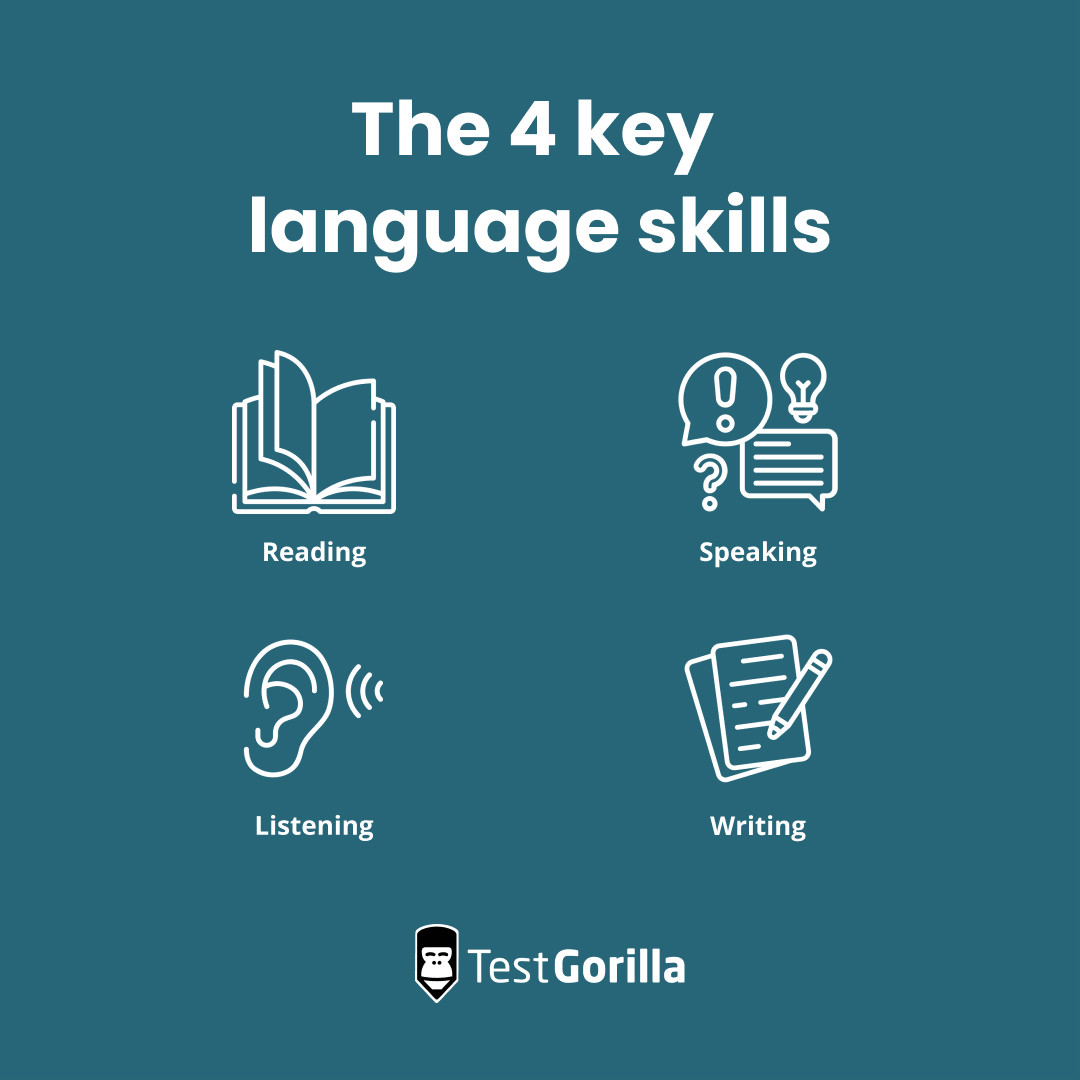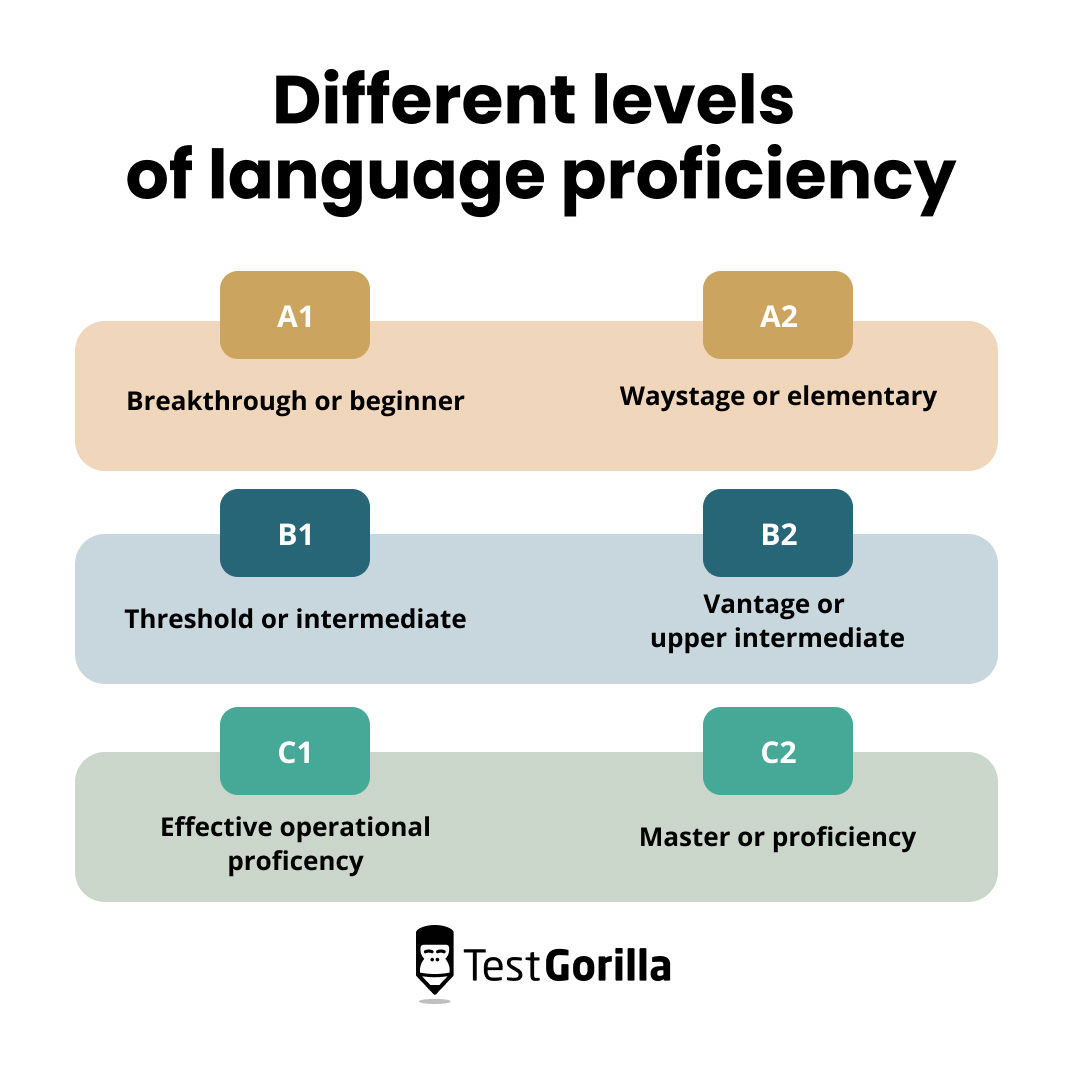Regardless of whether your employees will be working in English, Dutch, French, or Mandarin, language proficiency is crucial in most work environments. If your candidates aren’t native speakers of the language in question, a language proficiency test can help determine whether they understand the language well enough to succeed. This article will cover how to use tests like the Spanish proficiency test for employment.
Language proficiency tests are important because language skills are directly related to efficiency and performance. In Great Britain, 48 billion GBP are lost annually in missed contract opportunities due to insufficient language skills at the workplace. While some employees might do just fine with a working knowledge of the language, highly skilled non-native professionals might need to prove that they are proficient and can navigate complex terminology and linguistic nuances.
Additionally, more and more companies worldwide use English as their working language—even organizations where no one is a native English speaker. This means that many candidates need to be fluent in English regardless of where their employer is headquartered.
Table of contents
- What are the four key language skills at the workplace—and how do you test for each?
- Which roles require language proficiency tests?
- What are the different levels of language proficiency?
- What level of proficiency should you require?
- How to test language proficiency
- Language tests help you streamline your hiring process
- Frequently asked questions
What are the four key language skills at the workplace—and how do you test for each?
There are four key language skills: listening, speaking, reading, and writing. Proficiency requires mastery of each one of them; based on the specific role you’re looking to fill, some of them might be more important to you than others.
So, how do you test for language proficiency?
Online tests can give you a good idea of your candidates’ language skills (though depending on your testing software, you might need to get creative to test their speaking skills). During the interviewing process, simply speaking with your candidates in the language you’re looking to test will give you a good idea of their skills.
Other testing methods include printed tests, where applicants need to answer multiple-choice or open questions. Or you could require candidates to submit a video through a platform like TestGorilla.
Let’s look into each language skill:
Listening
Listening is considered a passive language skill, and people usually develop it before learning to speak a language. Listening is the ability to understand spoken language in various settings: a phone conversation, a one-on-one meeting, a Zoom call, a presentation, or more.
Based on the desired level of proficiency, you might want to test whether candidates can understand complex topics with all their nuances and terminology, or whether they can understand different accents. Listening is easy to test: usually, a recorded voice track, followed by a few questions (open or closed ones) is sufficient.
Another occasion to test an applicant’s listening skills would be a screening call or an interview. This approach can be time-consuming, though, we recommend doing that only with a few pre-selected candidates.
Speaking
Speaking implies that a person can fluently discuss a given topic with someone else (e.g., a colleague, manager, client, or contractor).
It’s particularly important for roles where your hires will need to interact with clients or with business partners in a foreign language. In addition to a solid grasp of grammar and a rich vocabulary, speaking requires clear, comprehensive articulation and the correct intonation.
Speaking can be difficult to test for in the preliminary stages of the hiring process, i.e. before a screening call or an interview. You could, however, ask candidates to record a short video of themselves where they speak in the language you’re looking to test by using a platform like TestGorilla.
Reading
Reading requires understanding written text, which can be of varying degrees of complexity. For most highly skilled roles, it’s essential for candidates to be able to understand written text, such as emails, guidelines, contracts, manuals, and articles. Testing your candidate’s reading skills is relatively easy—usually, a text accompanied by a few multiple-choice questions to test their understanding of it will suffice. Alternatively, you could test their reading and writing skills at the same time: ask them to sum up the text, rewrite it, or compare it with another text.
Writing
Writing is a skill that allows you to communicate in written form. If you need your candidate to be able to answer messages or emails, or write presentations, articles, guides, or other materials, testing their writing skills is crucial. Their cover letter and email correspondence (if they’re in the language you wish to test for) might already give you a good idea of their writing skills. An online test allows you to efficiently test for this skill too, or you could ask applicants to rewrite a short text.
Online tests allow you to easily check language proficiency, and continue the hiring process with candidates who meet your language requirements. With TestGorilla’s language tests, you can check your candidates’ grammar, vocabulary, sentence composition, reading comprehension, and listening comprehension. They’re quick to take (each test takes 10 minutes) and allow you to screen candidates before interviewing them. All major languages are covered: you can test applicants’ language skills in English, Spanish, French, German, Portuguese, Italian, Dutch, or Mandarin, for both intermediate and advanced levels.
The interview process is another occasion to test language skills, especially speaking. Some companies might administer their own language tests during the interview process or hire a recruiter to test for language proficiency.
Which roles require language proficiency tests?
Testing your candidates’ language proficiency might be necessary in a number of cases:
When hiring remotely or hiring talent from abroad. Employers’ interest in attracting foreign talent is increasing, and with the coronavirus pandemic, many companies have decided to start hiring remotely. If you want to attract global talent, you must make sure that the language skills of the candidate you select will be sufficient for them to be efficient at their job and perform well.
When hiring for your company’s offices in another country. If your company is currently expanding and you need to hire employees for your offices in a new country, you might need to check your candidates’ proficiency in the language (or languages) they’ll be working with. A good example is when you’re about to hire a technical writer for an international team in your organization.
When hiring for roles that attract a lot of foreign candidates. Some roles will attract foreign candidates due to the nature of the position, your location, or even the specific language requirements.
For client-facing positions where the employee will be working in a foreign language. Sales representatives, customer or tech support representatives, and account managers all need to be fluent in the language they’ll be speaking with your customers.
The best insights on HR and recruitment, delivered to your inbox.
Biweekly updates. No spam. Unsubscribe any time.
What are the different levels of language proficiency?
The CEFR framework identifies six levels of proficiency: A1, A2, B1, B2, C1, C2. The scale goes from A1 (beginner) to C2 (proficient). At the A1 level, a candidate is able to use basic language to achieve specific aims. At the C2 level, a candidate can understand and engage in complex social and business interactions.
Here’s a chart that describes the basic differences between each level:
What level of proficiency should you require?
Depending on the role, you may require different levels of proficiency. TestGorilla’s Test Library includes tests to identify candidates who can speak a language at the intermediate level, like our English intermediate B1 test, and for candidates who are proficient in the language.
Employees who can speak a language at the intermediate level can communicate with customers, colleagues, and other stakeholders comfortably around daily situations that can arise in the workplace. The texts and sentences used in the test mimic real-life situations at work and everyday life. Those who score well on this test will be able to understand simple, connected sentences on topics that are generally familiar.
Employees who are proficient in a language can express themselves fluently and spontaneously without much searching for expressions. They can understand demanding, longer texts and recognize implicit meaning in both written and verbal communications. They use the language flexibly and effectively for social, academic, and professional purposes and can produce detailed texts on complex subjects, showing a controlled use of organizational patterns, connectors, and cohesive devices.
If an employee will be in a customer-facing role, you should probably look for someone who is proficient in the language in question. Otherwise, intermediate is probably enough to allow the employee to do their job well.
How to test language proficiency
It’s a good idea to test the language proficiency of your candidates before you start interviewing them. The interview process is costly and takes time, so screening applicants in advance will allow you to filter them and spend less time doing interviews.
That’s why TestGorilla provides options for testing every aspect of language proficiency:
Listening is already tested in all of our language tests. You can also test listening by creating one or more custom video questions and then testing candidates on the content covered in the video.
Speaking can be tested by asking candidates to record a video response to a question (or multiple questions).
Reading and writing can be tested with tests from our Test Library and/or your own custom questions.
Language tests help you streamline your hiring process
Online language tests will allow you to significantly reduce the time-to-hire and the cost-per-hire whenever you’re hiring internationally or for foreign language roles.
With an average cost-per-hire of over $4000 in the US and tightening budgets, it’s important to know how to optimize resources in your hiring process—and language skills tests are one of the many ways to do that. Additionally, they allow you to easily avoid unsatisfactory hires due to insufficient language proficiency—and will make the whole hiring process more efficient.
Frequently asked questions
What is a language proficiency test?
A language proficiency test evaluates a candidate’s knowledge of a language. Typically, these tests assess proficiency based on the Common European Framework of Reference for Languages (CEFRL or CEFR) framework. These tests help identify employees who can participate conversations at the level you require for a role.
What are the different levels of language proficiency?
The CEFR framework identifies six levels of proficiency: A1, A2, B1, B2, C1, C2. The scale goes from A1 (beginner) to C2 (proficient). At the A1 level, a candidate is able to use basic language to achieve specific aims. At the C2 level, a candidate can understand and engage in complex social and business interactions.
How do I test language proficiency?
Online skills assessments allow hiring teams to test language proficiency in a quantifiable way without simply relying on candidate claims of proficiency (or spending the time to interview a candidate who may not possess the necessary level of proficiency). These tests cover skills like grammar, vocabulary and spelling, reading comprehension, and listening comprehension. You can use our English (upper intermediate/B2) test to hire an employee who needs to be highly proficient in English to perform well in their role.
You've scrolled this far
Why not try TestGorilla for free, and see what happens when you put skills first.
















